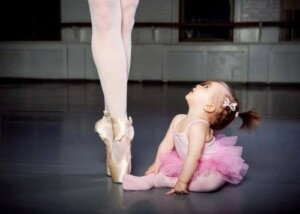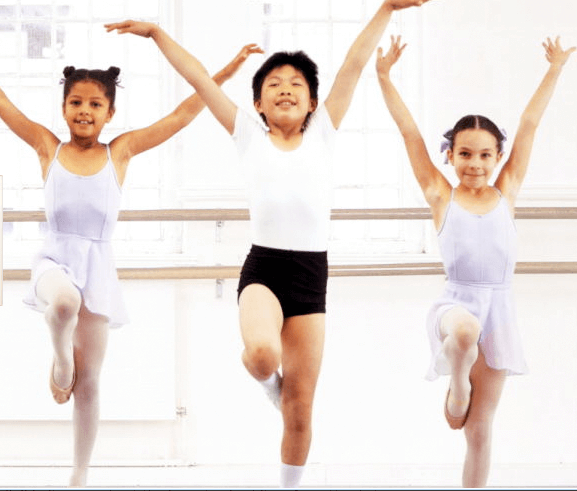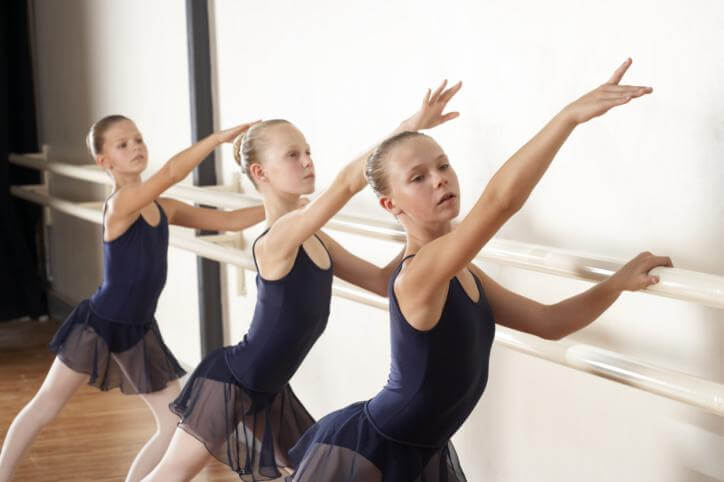The Benefits of Dance for Children

When a child learns to dance, they develop their intellectual and social skills, cultivate their creativity, and strengthen their self-esteem. Dance brings benefits that last a lifetime. Children who practice dance or take dance classes from an early age grow up with a greater sense of balance, rhythm, awareness, and value of their bodies. Keep reading to discover more about the benefits of dance.
Dancing is a fun activity for all children. At an early age, dancing is an exercise that comes out of its own accord, it’s spontaneous. And it doesn’t matter if your child is the best dancer or the creator of a new crazy rhythm; the important thing is the skills that children acquire with this practice, which go far beyond the mastery achieved through dance routines.
Dance, besides being a sensational practice, also brings many benefits for children. When it comes to children whose age is 5 years or older, dance helps the physical development of the body, as it defines the figure. In addition, it provides a positive image for children, because it generates feelings of self-confidence, discipline, grace, among other qualities.
Dance programs, which accompany their activities with music and emphasize motor and movement tasks have been shown to significantly improve behavioral and study problems in children who suffer from them. Research and observation processes that have been made regarding these types of cases show that most of the children enrolled in such programs improved after a certain time of being in dance activities.
More dancing means more creativity

Dance develops the creativity and imagination of children, especially when they’re at an early age, and helps them interact with other children who are of the same age or older than them. Dance classes also help them to have elasticity, organization, harmony, balance, and concentration.
Dance is a means of expression that enhances the innate abilities and confidence of children, who through this art, enhance their self-esteem, which helps them make good decisions in their day-to-day lives.
A point that’s seldom addressed regarding the practice of dance as a discipline is that of music. Whatever music is going to be used, the child must like it, as the music used also plays a very important role when practicing dance. It helps them to release their body more easily. Hence the importance of liking the music.
Dance and music facilitate group work
Dance increases physical strength and endurance in children. It helps them to improve posture, circulation, and balance, as well as to develop good body motor coordination. Regular dance practice, which translates to a couple of classes per week, helps children to have good cardiovascular health.
Group cohesion is important during dance classes, as it’s necessary for children to learn to cooperate and work as a team to achieve good results. Group choreographies are interesting when experiencing bonding with other peers.
Dance has helped to solve lower limb problems in children. “Dance helps with foot, knee, and leg problems. It’s given very good results because orthopedic doctors recommend it to help solve those health problems” assures Iris Fuentes, who is a dance specialist.
Dance in a healthy way

“Children who dance are usually enterprising people and see dance as a hope; a healthy way. Dance is one of the best lifestyles; the most spiritual”, according to the specialist, who reiterates that dance, like other arts, brings many benefits for the mental and intellectual development of children.
According to several studies, children who take dance classes tend to be more successful academically, the key observed in these studies is almost always the discipline learned. In fact, children who practice this art learn to retain information in school and it’s thanks to the various steps they must memorize in a dance academy.
Many times, children who practiced dance during their childhood are dedicated to other things when they grow up. They become professionals and honestly very few continue dancing, but the discipline learned in those times of dance will help them in almost all levels of their lives, and most keep the motivation to get ahead in their careers and have a healthy life.
When a child learns to dance, they develop their intellectual and social skills, cultivate their creativity, and strengthen their self-esteem. Dance brings benefits that last a lifetime. Children who practice dance or take dance classes from an early age grow up with a greater sense of balance, rhythm, awareness, and value of their bodies. Keep reading to discover more about the benefits of dance.
Dancing is a fun activity for all children. At an early age, dancing is an exercise that comes out of its own accord, it’s spontaneous. And it doesn’t matter if your child is the best dancer or the creator of a new crazy rhythm; the important thing is the skills that children acquire with this practice, which go far beyond the mastery achieved through dance routines.
Dance, besides being a sensational practice, also brings many benefits for children. When it comes to children whose age is 5 years or older, dance helps the physical development of the body, as it defines the figure. In addition, it provides a positive image for children, because it generates feelings of self-confidence, discipline, grace, among other qualities.
Dance programs, which accompany their activities with music and emphasize motor and movement tasks have been shown to significantly improve behavioral and study problems in children who suffer from them. Research and observation processes that have been made regarding these types of cases show that most of the children enrolled in such programs improved after a certain time of being in dance activities.
More dancing means more creativity

Dance develops the creativity and imagination of children, especially when they’re at an early age, and helps them interact with other children who are of the same age or older than them. Dance classes also help them to have elasticity, organization, harmony, balance, and concentration.
Dance is a means of expression that enhances the innate abilities and confidence of children, who through this art, enhance their self-esteem, which helps them make good decisions in their day-to-day lives.
A point that’s seldom addressed regarding the practice of dance as a discipline is that of music. Whatever music is going to be used, the child must like it, as the music used also plays a very important role when practicing dance. It helps them to release their body more easily. Hence the importance of liking the music.
Dance and music facilitate group work
Dance increases physical strength and endurance in children. It helps them to improve posture, circulation, and balance, as well as to develop good body motor coordination. Regular dance practice, which translates to a couple of classes per week, helps children to have good cardiovascular health.
Group cohesion is important during dance classes, as it’s necessary for children to learn to cooperate and work as a team to achieve good results. Group choreographies are interesting when experiencing bonding with other peers.
Dance has helped to solve lower limb problems in children. “Dance helps with foot, knee, and leg problems. It’s given very good results because orthopedic doctors recommend it to help solve those health problems” assures Iris Fuentes, who is a dance specialist.
Dance in a healthy way

“Children who dance are usually enterprising people and see dance as a hope; a healthy way. Dance is one of the best lifestyles; the most spiritual”, according to the specialist, who reiterates that dance, like other arts, brings many benefits for the mental and intellectual development of children.
According to several studies, children who take dance classes tend to be more successful academically, the key observed in these studies is almost always the discipline learned. In fact, children who practice this art learn to retain information in school and it’s thanks to the various steps they must memorize in a dance academy.
Many times, children who practiced dance during their childhood are dedicated to other things when they grow up. They become professionals and honestly very few continue dancing, but the discipline learned in those times of dance will help them in almost all levels of their lives, and most keep the motivation to get ahead in their careers and have a healthy life.
All cited sources were thoroughly reviewed by our team to ensure their quality, reliability, currency, and validity. The bibliography of this article was considered reliable and of academic or scientific accuracy.
- Andreu, R. C., Torres, L. H., & Quiles, O. L. (2011). Las motivaciones de los niños para aprender música en la Escuela de Música y Danza de Melilla. Dedica. Revista de Educação e Humanidades, (1), 293-318. https://dialnet.unirioja.es/servlet/articulo?codigo=3625408
- Hallam, S. (2010). The power of music: Its impact on the intellectual, social and personal development of children and young people. International Journal of Music Education, 28, 3 (2010) 269-289.
- Hargreaves, D. J. (1991). Infancia y educación artística. Madrid: Morata.
- Moledo, C. P., & López, J. C. (2013). ¿ Podemos mejorar nuestra salud mental a través de la Danza?: una revisión sistemática. Retos. Nuevas tendencias en Educación Física, Deporte y Recreación, (24), 194-197. https://www.redalyc.org/pdf/3457/345732290038.pdf
- Padilla, C., & Zurdo, R. (2009). Desarrollo de la creatividad a través de la danza improvisación y la danza contacto. Valores y aplicaciones en Educación Primaria y Secundaria Expresión Corporal y educación. Sevilla: Wanceulen.
This text is provided for informational purposes only and does not replace consultation with a professional. If in doubt, consult your specialist.








